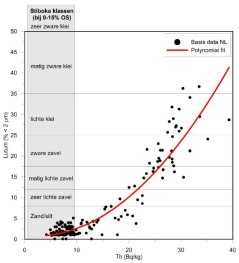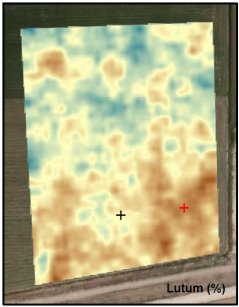Proximal Sensing
Soil Hydro-Physics sampling site more accurate with sensor technology
The Dutch Soil Information System (SIS), which is part of the Key Registration Subsurface (BRO), includes a representative database of Soil Hydro-Physics (ShP) data of the Netherlands. The Soil, Water, Land use team of Wageningen Environmental Research (WENR) has been busy updating this data in the past year. This includes field sampling and analyzing new samples in the lab. The sampling locations are usually selected based on existing soil maps and profile data in BRO/SIS. To improve this methodology and to make it smarter, sensor technology has been used. An important goal for 2016 was sampling of heavy-loam soils, because their representation in the BRO is relatively low.
To be more sure about the occurrence of the heavy loam soils during sampling, two test location were selected for a trial. On these locations the most optimal sampling point is determined within the chosen plot by means of sensor technology. With the gammaspectrometer of Medusa Explorations the texture of the topsoil was measured in situ (Figure 1).
A gammaspectrometer measures the natural radioactivity of the soil (0-30 cm), which is related to the texture of the soil. The measurement data are converted to clay content, and texture classes, using a general
correlation for the Netherlands (Figure 2).
Based on this data in both cases the sample point, that was initially selected based on data in BIS and the soil map, was moved over short distances (Figure 3).
The clay contents, as predicted by the gammaspectrometer, differs by 0.5% with the lab measured clay contents. The use of the sensor reduced the risk of "failures" in the field. A very good result and a useful application of sensor technology.
Literature
Van Der Klooster, E., F. M. van Egmond, M. P. W. Sonneveld, 2011. Mapping soil clay contents in Dutch marine districts using gamma‐ray spectrometry. European Journal of Soil Science, Vol.62(5), pp.743-753


